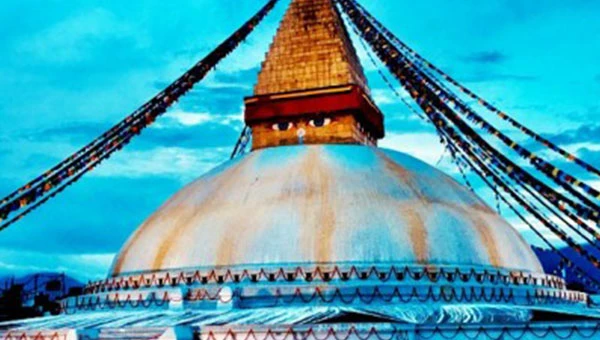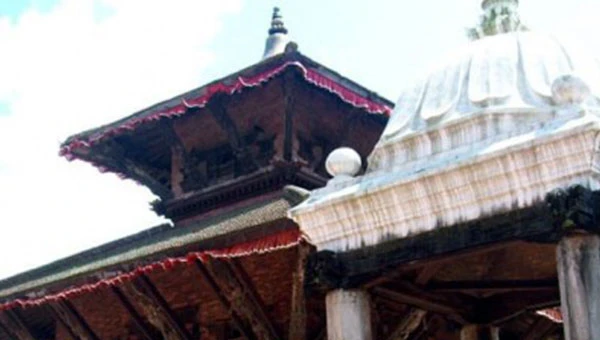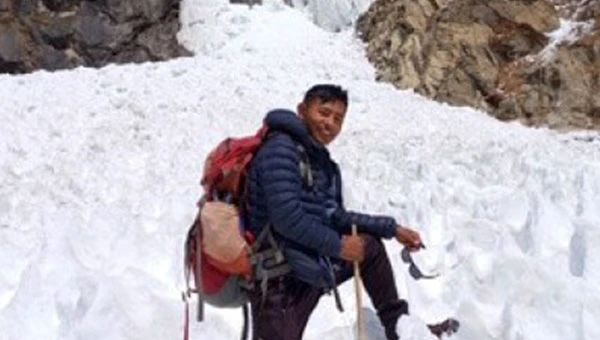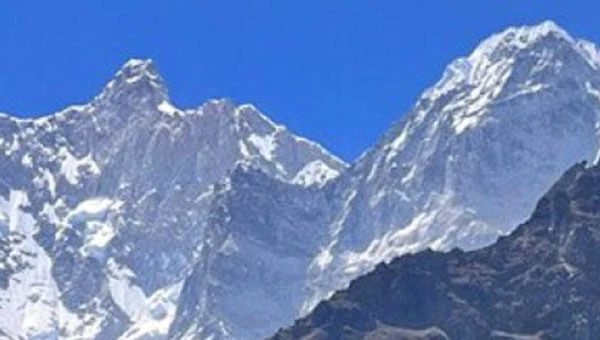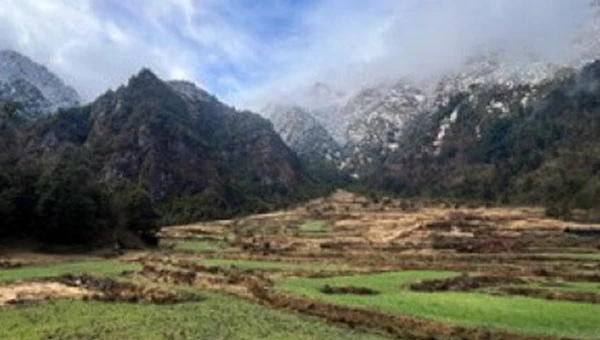Swayambhunath Temple/ Monkey Temple is regarded as one of the oldest temples in Nepal. Swayambhunath Stupa is also popular as Monkey Temple because hundreds of monkeys scamper around the temple especially at night after all the priests, pilgrims, and visitors leave the place. Literally, “Swayambhu” means self-existent or self-arisen or self-created. Swayambhunath complex is believed to be originated since the 5th century as the stone inscription found in the area shows. Swayambhunath Temple is listed as one of the UNESCO World Heritage Sites.
Swayambhunath Temple
History and Legends of Swayambhunath Temple / Monkey Temple
According to legends about Swayambhunath, the 15th century Swayambhu Purana, tells of a miraculous lotus, planted by a past Buddha, which blossomed from the lake. The lake covered Kathmandu valley at that period. The lotus automatically radiated a mysterious light and the place named to be Swayambhu which means 'Self-Created or Self-Existent'. Saints, sages, and divinities traveled to the lake to worship this miraculous light for its power in granting enlightenment. The bodhisattva Manjushri was meditating at the sacred mountain and had a vision of the dazzling light. Manjushri flew across the mountains of China and Tibet upon his blue lion to worship the lotus. Deeply impressed by the power of the radiant light, Manjushri thought if the water were drained out of the lake Swayambhu would be easily accessible to human pilgrims. With a great sword, Manjushri cut a gorge in the mountains surrounding the lake. The water drained away and created the valley as of present-day Kathmandu. The lotus was then transformed into a hill and the light became the Swayabhunath Stupa. The geological evidence supports the story of Kathmandu Valley was once a lake. Additionally, the stories also mention that while assembling the temple Manjushree’s hair was covered by lice which were transformed into holy monkeys.
Architecture and Structure of Swayambhunath Temple / Monkey Temple
Swayambhunath is a magnificent white dome stupa topped with golden spire and eyes(Buddha’s eyes seeing and knowing all) painted in the four sides along with a variety of shrines and temples crafted with ancient architecture and lighted up by the colorful prayer flags.
- The white dome at the base is the basic representation of the entire world whereas the eyes are the Buddha’s eyes as well as eyes of wisdom.
- The thirteen pinnacles on the top symbolize the thirteen stages of spiritual realizations to reach enlightenment or nirvana or Buddhahood.
- The eyes also suggested being the eyes of wisdom when a person awakes from the bonds of the world by passing thirteen stages of enlightenment. There is a large pair of eyes on each of the four sides of the main stupa and above each pair, there is another third eye. It is said that when Buddha preaches, cosmic rays emerge from the third eye and acts as messages to heavenly beings. The other beings other than humans cannot come to earth to listen to the Buddha’s teaching so the cosmic rays relieve their suffering and let them listen to his messages and words of wisdom.
- The nose (some does not regard it as a nose and just as a symbol of 1) looks like a question mark which symbolizes 1 number in Nepali. This indicates the unity of all things existing in the world as well as the only path to enlightenment through the teachings of Buddha.
Swayambhunath Temple has the domed stupa (Swayambhu Mahachaitya) in the center on the top of the hill. There are carvings of Panch Buddhas on each of the four sides of the stupa which enhances the beauty and value. Panch Buddhas are Five Buddha in a metaphorical sense in Tantrayana. Panch Buddha is:
- Vairochana; occupies the center and is the master of the temple,
- Akshobhya; faces the east and represents the cosmic element of consciousness,
- Ratna Sambhava; faces the south and represents the cosmic element of sensation,
- Amitabha; He represents the cosmic element of Sanjna (name) and always faces the West
- Amoghsiddhi; represents the cosmic element of confirmation and faces the north.
Temples and Surroundings of Swayambhunath Temple
Swayambhunath Temple has been renovated and constructed several times due to the natural calamities yet, it still holds key essence and values of past centuries. Swayambhunath Temple incorporates both Hindu and Buddhist temples and deities which showcase the cohesiveness among the devotees and encourage people to maintain cohesiveness in the society. Each morning before dawn numbers of Buddhist and Hindu pilgrims ascend the 365 steps from the eastern side that lead up the hill, passing the gold plated Vajra (thunderbolt, Tibetan: Dorje) and two lions guarding the entrance, and begin a series of clockwise circumambulations of the stupa. There are other temples and religious assets: Pratapura Sikhara, Anantapur Temple, Bashundhara Devi temple, Dongchu Old Monastery, Sahasra Buddha Chaitya, Harati Ajima Temple (Buddha regarded her to be the caretaker of all children), Devi Mata Mandir, Gompa Prayer Wheel, Karma Raja Maha Vihar, Karma Raj Ghumpa, Bajradhatu Chaitya, Shantipura Mahavihar, Statue of Pease, Peace pond.
Besides, Buddha Amideva Park is located at the bottom of the hill containing three huge shining golden statues of Sakyamuni Buddha, four-armed Chenresig, and Guru Rinpoche. Likewise, the panoramic view of the Kathmandu valley from the temple with the fresh air blended with the fragrance of incense and butter lamps creates pleasure among travelers. Intricate carvings decorate every space of the temple and lead to mystical experience in the presence of local devotees and pilgrims who make a ritual circumnavigation of the stupa, recite mantras, do offerings, spin prayer wheels. Swayambhunath is a place offering peace, freedom, and joy of cohesiveness to the society. Hope you receive the pleasure in mind and heart after visiting Swayambhunath Stupa just the way all visitor feel.
Considering the travelers’ interest, Nepal Adventure Team arranges the Kathmandu Valley Tour 2 Days: Explore UNESCO World Heritage Sites. The experienced guide of Nepal Adventure Team leaves no stone unturned to please travelers with the information, importance, and mythology related to those World Heritage Sites. If travelers are in short of time, you can visit a few of the Heritage sites of Kathmandu with the support of the Nepal Adventure Team. You can customize your tour as per your flexibility and comfort. If you are physically active and interested in adventure, you can also enjoy the “Kathmandu Valley Cycling Tour: Riding to UNESCO World Heritage Site”. Here, you explore Kathmandu Valley on a bicycle with the support of an experienced guide of the Nepal Adventure Team. Other tours and trek services are also provided by Nepal Adventure Team.
Entrance Fees:
- SAARC Nationals: NPR 50
- Chinese Nationality: NPR 200
- Foreign Nationals: NPR 200
- Nepalese Nationality: Free
Personal Tips
- Carry personal ID certificates (passports).
- It is better to carry a few cash while touring in Nepal.
- “Namaste” is widely practiced in Nepal so you can use Namaste instead of hello/hi to begin any conversation. Nepalese adore the foreigners using Namaste.
- If you lose your group/ tour guide, you can communicate with tourist police residing in every touristic area.
- Most of the Nepalese know the English language, so you can easily communicate with locals.
Do’s and Don’ts at Swayambhunath Temple/ Monkey Temple
- Monkey temple is the home of numbers of monkeys so do not eat in front of them as they may seize your food. The monkeys are friendly and do not attack people but they may be defensive as per your behavior towards them. Do not smile or laugh at them as monkeys regard the displaying of teeth as an initiation of a fight. You just need to be calm, visit the surroundings, and just regard monkeys as fellow visitors.
- According to local custom, you can get into temples and holy places after taking off your shoes.
- Don’t bring anything with furs, leather products inside the temples.
- Watch the notice for photography and do not take photos of temples/statue without permission. At some of the places you may not take your cameras and the authority will return your camera after your visit to the concerned area/temples/monument.
- Do not wear a hat/ cap inside holy places as a temple or while praying to gods in Nepal.
- Nepalese lit fire and incense which they regard as holy and religious so value it while visiting and do not litter at those areas. If you face allergy or difficulty due to the aroma of incense, you can use a mask to cover your nose and mouth.
- Do not touch any elements/assets with feet or stretch your feet towards them.

